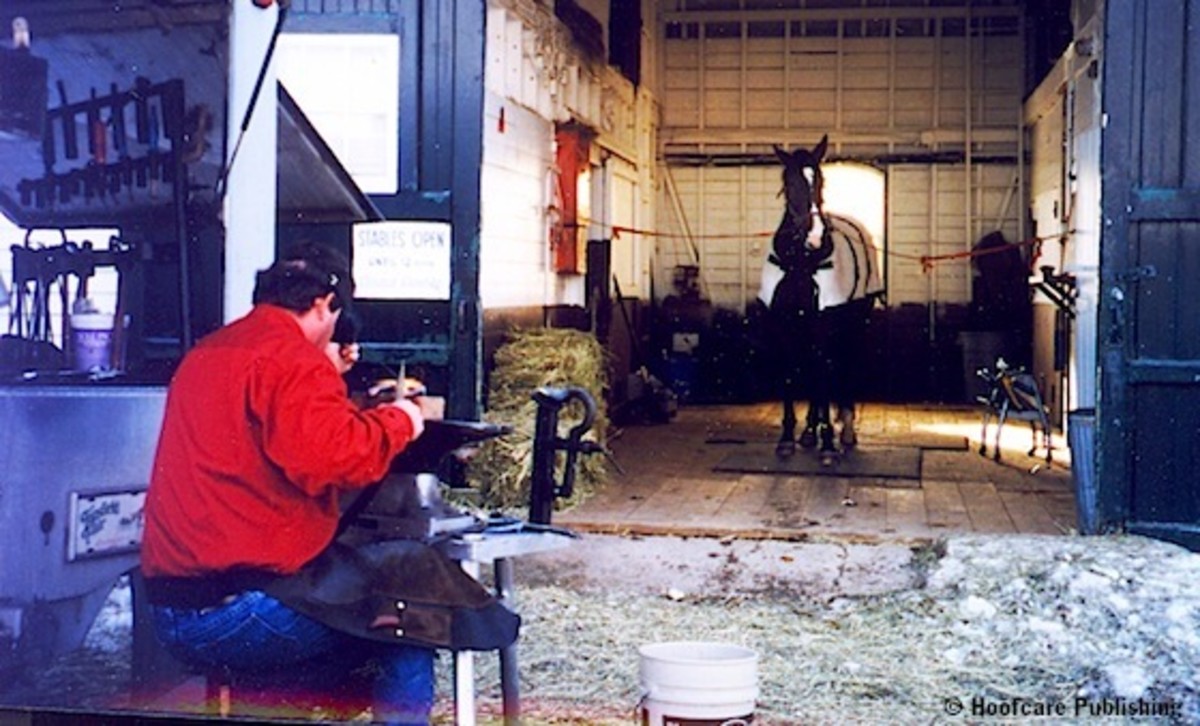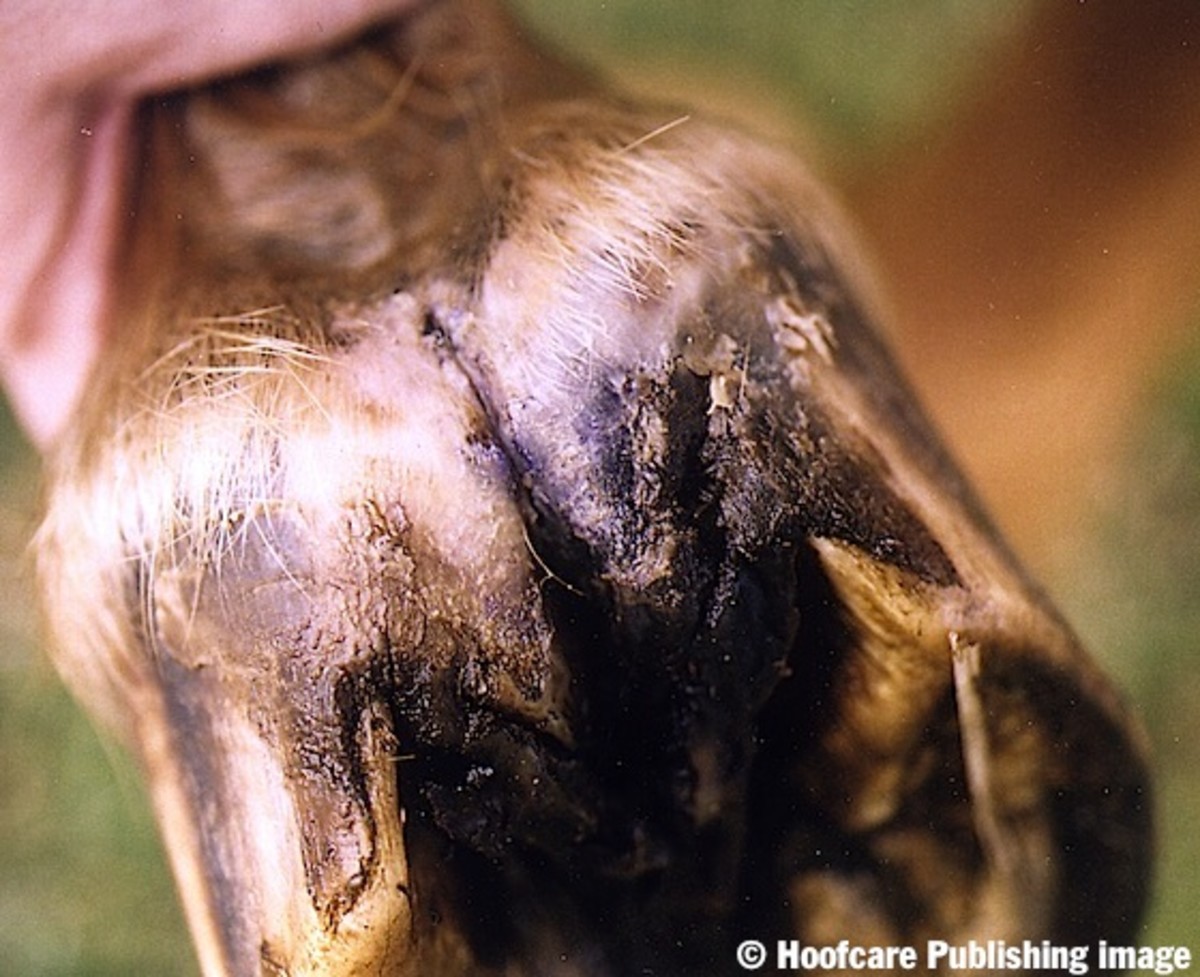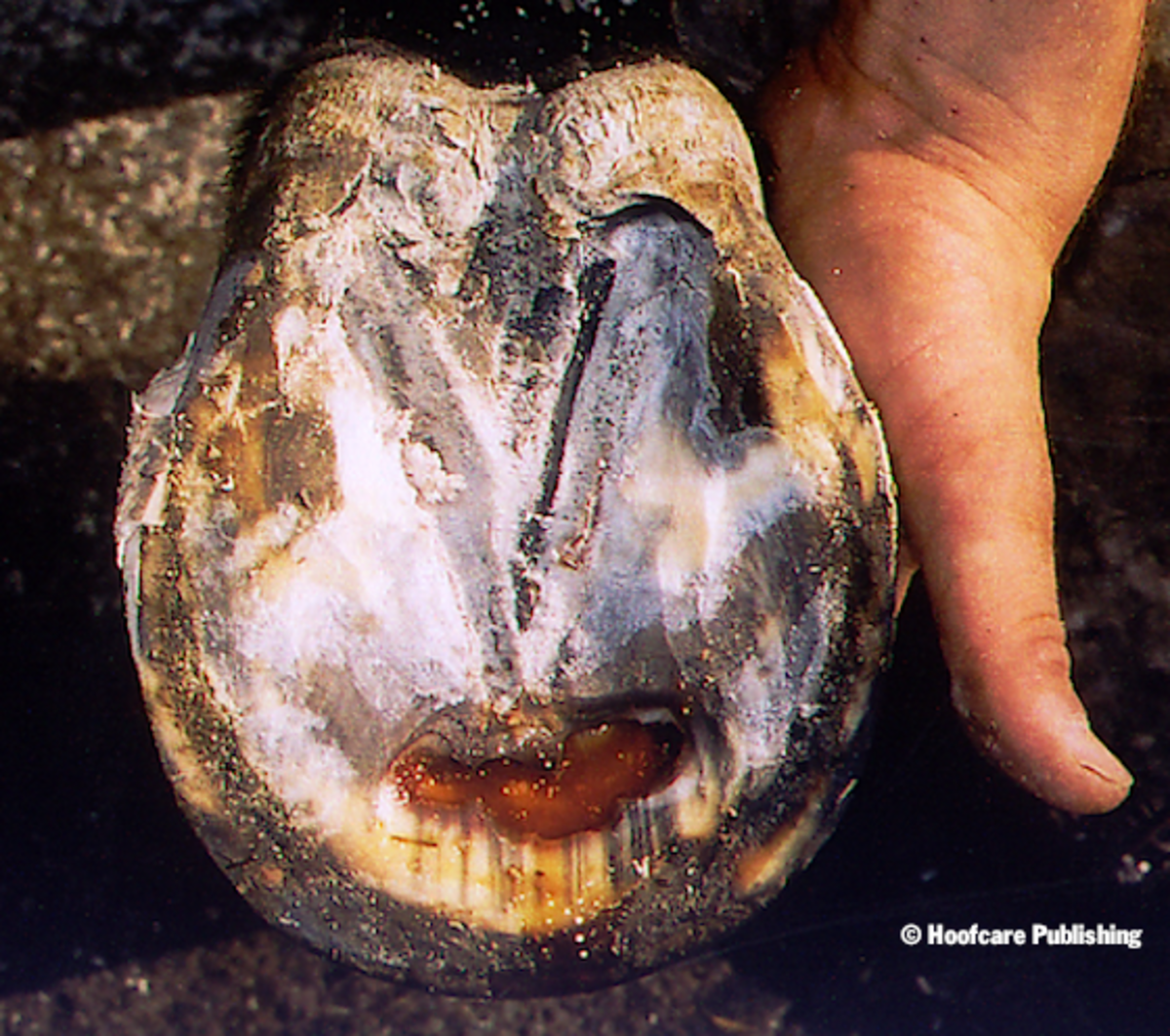Winter Hoof Problems: Advice from Colorado State University
- March 10, 2017
- ⎯ Fran Jurga

You might think that you’re over the hump because you and your horse survived the Polar Vortex or the Great Ice Storm in January. But we now have to deal with the problems that prolonged wet and freezing conditions can bring to our horses’ feet.
Dr. Luke Bass, a veterinarian with Colorado State University’s Equine Field Service, has compiled a list of the most common hoof problems and how you might be able to avoid or treat them.
For horses living outside, snow and wet, muddy conditions can lead to mud clods and ice balls in the hooves. Prolonged wet conditions may cause very soft feet that are susceptible to more serious problems, including hoof wall separation, thrush and sole abscesses.
Thrush
This anaerobic bacterial infection slowly invades the hoof tissue. Thrush is characterized by black, malodorous necrotic, or dead, material in the central or collateral sulci of the frog – the grooves adjacent to and in the middle of the triangle-shaped frog.
Early stages of thrush involve only superficial tissues and do not cause lameness. But if thrush is not treated, the infection can advance into sensitive tissues and internal structures of the foot, such as the digital cushion, hoof wall and heel bulb; this will lead to lameness.

The main factors causing thrush are excessive hoof contact with moisture and lack of regular foot care, either of which may occur when snow, rain and cold temperatures cause us to be less diligent about mucking the stall, picking out hooves, or turning out horses for exercise.
Although less common, poor hoof conformation can predispose horses to thrush, even when they live in clean, dry conditions.
In most cases, thrush is preventable by maintaining dry footing, clean hooves, and regular turnout or exercise. If you detect thrush symptoms, ask your veterinarian about safe treatment options, such as scrubbing the hooves with disinfectant solution and applying thrush treatment to the frog. For horses whose underlying hoof conformation predisposes them to thrush, good management techniques include regular trimming of the foot and frog.
Sole bruising and abscesses
This time of year, it’s not uncommon for horse owners to report, “Yesterday my horse was perfectly sound, but today he won’t touch one foot to the ground. There’s no apparent injury or sign of a problem in his leg or hoof other than sudden, severe lameness. What could have happened?”
Hoof bruising occurs for many reasons: thin soles or hoof imbalances that create abnormal impact on one side of the hoof, inadvertent horseshoe contact on the sole and riding over rocky terrain. Bruised feet might require changes in the farrier’s approach to trimming and shoeing; hoof pads might also help protect your horse’s feet.
Hoof abscesses can occur after bruising or from penetrating wounds. The abscesses occur when bacteria get trapped beneath the hoof wall or sole, and then multiply.
The bacteria create pus, which builds up and creates focal pressure. This can be quite painful, and a horse is often reluctant to bear any weight on the affected foot, especially the heel. Abscesses remain painful until the pus pockets drain and the pressure is relieved.
The abscess might follow a path of least resistance to drain at the heel bulb or along the coronary band, or it might rupture through the sole.
Check for a smoldering abscess by pressing your finger on each heel bulb and around the coronary band. Feel for heat in the foot and hoof and for tissue softening; also note your horse’s pain response.
Have your veterinarian open an abscess to establish drainage. Owners may also draw out an abscess by soaking the affected foot twice daily in Epsom salts and warm water and by applying poultice packs.

Risk factors for sole abscess
Factors that put a horse at risk for developing sole abscess include weather conditions cycling between wet and dry, penetrating wounds, close nails in a recently shod foot, bruising from ground conditions, and poor hygiene in stalls and paddocks.
What can you do to minimize or prevent the occurrence of painful abscesses? The best line of prevention is good hoof care that leaves adequate sole for protection and develops a snug and uniform sole-wall junction.
Good hoof care includes:
• frequent hoof cleaning to remove rocks and mud,
• routine farrier care to keep the feet balanced, and
• shoes for protection if a horse has thin soles or is prone to bruising.
Be proactive in maintaining soundness by keeping the feet trimmed so they don’t get wall separations that can lead to white line disease and abscesses.





